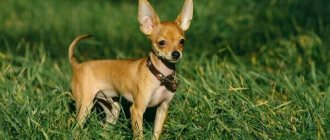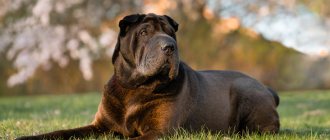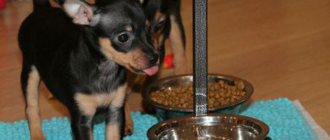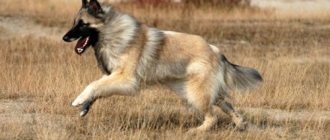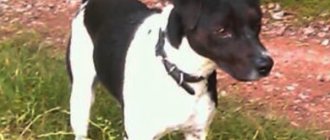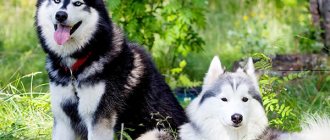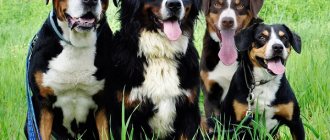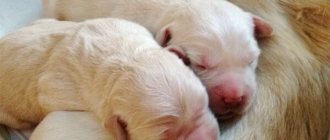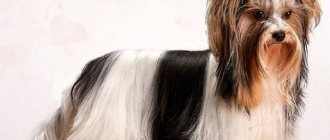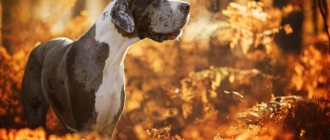Currently, the Yorkshire Terrier breed is considered one of the most fashionable and prestigious in the world. Many modern celebrities are Yorkie owners.
Often, the presence of such a dog with a favorite idol is the reason why people buy a pet of the same breed.
Currently, Yorkshire terriers belonging to the baby face breed are especially popular among breeders and dog lovers.
In the article we will look at the features of these dogs and show their photos.
Other criteria
Activity
The Yorkie is more active, as it is a real, albeit small, terrier.
Chihuahuas are less active: these dogs prefer quiet games and resting on a bed.
Trusting strangers
Yorkies do not experience aggression towards strangers, but Chihuahuas do not like strangers: they can even attack a guest who comes to the house if they don’t like him in some way.
Health
Due to their more fragile build, Chihuahuas are more likely to suffer injuries, including fractures. They also have breathing problems, eye diseases and cardiovascular diseases. In many Chihuahuas, the fontanel on the head does not heal until the end of its life, which is why it is especially necessary to protect the dog from head injuries.
Yorkies have a predisposition to ear diseases, diseases of the digestive system and accelerated weight gain.
CAREFULLY! Both of these breeds are prone to diseases such as oral diseases, abnormal dental growth, and musculoskeletal diseases.
Hydrocephalus occurs in both Yorkies and Chihuahuas, but the latter is much more common.
Domination
The Yorkshire is a more sociable and less dominant breed.
The Chihuahua has an innate predisposition to dominance, and often there is a serious struggle between him and the owner as the pet grows up for the place of leader in the family.
Learning ability
Both breeds are distinguished by their intelligence and intelligence, but it is still easier to train a Yorkshire, since this dog, with proper upbringing, grows up balanced and calm, and its love and desire to please its owner simplify the learning process.
You need to look for a special approach to Chihuahuas, since these dogs do not tolerate people raising their voices at them: this makes them confused, and sometimes they can even fall into a state of stress.
Owner reviews
Our Yorkie is a source of good mood. The dog loves all members of the household, but especially me as the owner. Jack is very affectionate and lively.
The Yorkshire Terrier is a sweet and easy to train breed. Doesn't shed at all. And these dogs can have absolutely any hairstyle. I have three Yorkies living with me, they are always together, like a friendly team.
I have dreamed of a Yorkshire terrier since childhood. And now the dream has come true. Caring for Katie is a real pleasure. The dog is friendly, loves to play, and it doesn’t matter even with whom, even with a turtle. I advise everyone to get pets like Yorkies.
Head
The Yorkshire Terrier's skull is small and flat, the muzzle is not long - a third of the length of the head. The neck is quite long.
The bite is scissor-shaped, even, like a dog's jaw. The teeth are set vertically.
The eyes are medium in size, shiny, and beady. The eyelids are dark, the nose is black.
The ears are bright brick color, very small, in the shape of a “V”, located high on the head, but not very wide, so they do not seem protruding.
York baby face
The variety with a short muzzle and large eyes, the baby face (from the English “baby face”), is breaking all records of demand among Yorkshire terriers.
This York goes beyond the standard:
- round skull, very short muzzle;
- huge, even bulging eyes, with an expression of surprise;
- ears are set low.
Unfortunately, “baby faces” are characterized by chronic conjunctivitis (hair irritates overly large eyes/tear duct narrows) and breathing problems (due to a too short muzzle, the dog grunts when moving and/or snores in its sleep).
How to choose a puppy?
Despite the fact that baby face is not considered a standard type of breed, it is still better to buy such a puppy with documents - from a nursery or from a breeder. In this case, the owner can be sure that he has a Yorkie and not a mixed breed.
When you arrive to pick up your future pet, you need to make sure that the dogs are kept in proper conditions and that they look healthy and well-groomed.
How to choose the baby face in the litter? You need to look at all the puppies - the difference between baby faces and standards is already clearly visible at this age. Also, to be on the safe side, it is recommended to take mental measurements of the length of the muzzle and compare it with the total length of the head.
The puppy should look cheerful, playful and active, but in no case aggressive or, on the contrary, intimidated. A healthy baby has clear eyes, a clean nose and ears, a silky shiny coat without bald spots, dandruff or external parasites, as well as healthy skin without redness, wounds or inflammation.
CAREFULLY!
Yorkshire Terriers should not be sold before three months of age. An earlier sale of the litter should alert the future owner.
Why is this done?
Attempts at crossing are usually called designer breeding of dogs - with a competent approach and knowledge of the basic laws, you can get quite interesting results. The results of the mixture are not suitable for exhibitions, but they have a rather interesting exterior, which contains features of both varieties. In addition, the character of a mixed breed from a Yorkie and, for example, a toy terrier, also combines the characteristics of both parents
It is important to follow one of two rules:
- Crossing two purebred individuals;
- A union of two identical design crosses.
https://www.youtube.com/watch?v=vuNSs0Jh9yg
Crossing of different breeds is done to breed new designer breeds. As mentioned above, the main goal of designer breeding is the exterior of the future dog - a Yorkie and a toy terrier or Spitz give a very interesting amount of external data.
Most dog breeders are quite skeptical about breed crossings.
Initial recommendations
Before raising a Yorkshire Terrier, it is worth familiarizing yourself with the basic principles of training. Below are some tips on how to train these dogs:
Advertising:
- To begin with, make sure that you purchase your Yorkie from a reputable cattery. A dog's character traits are often not only the result of upbringing, but also a consequence of genetic baggage. Good breeders will weed out those with unstable temperaments, so you have a much better chance of success if you want a pet from parents with the right temperament.
- Raising a Yorkshire Terrier always begins with the distribution of roles - from the moment he appears in your home, let him clearly understand that you are the leader of the pack, he is a subordinate. First, give him a place - a bedding, rug or box where the puppy will live. Bring him there, put him down, play with him and treat him to something tasty. The moment you put him there, say the command “Place!” Repeat this regularly to the student until he understands the information enough to go there at your request. This will be a good rehearsal before teaching your Yorkie commands.
It's best to start training with the simplest commands.
- When starting to train a Yorkie puppy at home, accustom him to a stable daily routine - food, walks and rest should be at the same time.
- Always feed your pet after you have eaten yourself - this will strengthen your position as the leader of the pack.
- Remember that only the leader always occupies the highest position - so do not allow the puppy to jump on chairs, chairs and other furniture. In addition, he may fall from an elevated position and injure himself. Anything above the puppy's eye level is considered elevated.
- Do not allow your pupil to walk ahead of you along the corridor or climb the steps, or to be the first to enter the door - only the leader is allowed to do this. You decide where the pack goes and, accordingly, go ahead. As for the steps, the same factor plays a role here as when jumping. The dog is above you and watches you rise - your status in his eyes automatically becomes lower.
You must show yourself as a master in the eyes of your pet.
Raising a Yorkie at home is based on the fact that the decision is always yours. This applies even to such little things as affection or games - if a dog pokes its nose into your hand, begging for affection, this is not a reason to succumb to its manipulation. Don't forget - you are the leader and you decide when to pet your pet. Yorkshires often understand gestures much better than voice commands - try to take this into account
Also, be careful that your gestures do not contradict your verbal orders, otherwise you risk confusing your dog.
Breed characteristics
The Yorkshire Terrier is a small animal. However, the confident nature of the variety does not at all correspond to its small dimensions. A Mini Yorkie, like other small varieties, will feel at least two to three times its actual size. Accordingly, this is how they behave - the Yorkshire Terrier is usually not afraid of enemies, he is brave and decisive. But by their nature, as the owners write in reviews, Yorkies are very friendly and sociable if they are raised correctly.
This character will appeal to many people who prefer active recreation. However, not all owners will be able to come to terms with such a character. If a Yorkshire Terrier is ill-mannered, then it will be a threat not only to other dogs, but even to its owner. The Mini Yorkie has a lot of energy and curiosity, which can easily provoke an ill-mannered dog to run after the first dog he comes across in order to growl at it.
One more character trait should also be highlighted. The Yorkshire Terrier has an inexhaustible supply of energy. If you live in your own home, then get ready for the fact that your Mini Yorkie will constantly run after the cats living in the surrounding area. Also, judging by the reviews of the owners, such dogs love to dig holes in the garden, gnaw flowers, wires, and tear pillows. In general, the Mini Yorkie loves to misbehave and nothing can be done about it unless you raise him correctly.
Varieties
In nature, there are two varieties of these pets and they differ from each other in the structure of their faces. If the classic type and baby face. The baby face is characterized by large bulging eyes and a short face.
- standard;
- micro representatives;
- and super mini Yorkies.
The weight chart for standard, micro and super mini Yorkies is given in the table below.
Appearance
If we understand the character, let's proceed to the description of the appearance. The Mini Yorkie breed is characterized by its small size, as can be seen in the photos and videos. Dogs of any age are characterized by short faces and a relatively small skull. Their ears are small, V-shaped. The jaws of representatives of this dog breed are usually even, and the teeth in the mouth are vertical.
It is also worth emphasizing that the length of the face of a dog of any age is standard, representing a third of the length of the entire body. Also, currently, baby-face varieties are becoming increasingly popular, which also have their own differences in appearance. Babyfaces have larger eyes than regular Yorkies and a slightly shorter face. Because of this, baby faces are characterized by a childlike facial expression.
A regular Yorkie, like a baby face, has straight and normally developed front legs. In most cases, they are covered with brownish fur, usually the ends of the hair are much lighter than the roots. As for the color of the hind legs, the Yorkie has an identical color on both the front and hind legs. Owners used to prefer to trim their dog's tail, but this practice has fallen out of favor in the last ten years.
As for color, dogs of this breed usually appear black at birth. The fur color on the muzzle, limbs and under the tail may be lighter. This is typical for both regular Yorkies and baby faces. In the area of the beard, the color of the coat may be lighter or even bronze.
As a pet matures, of course, its color also changes. In the case of standard and baby-face varieties, the coat color becomes lighter. If you have a chocolate Yorkie, it may darken. Usually the color starts to change from the head.
Yorkie weight by month
Now let's look at the weight table for representatives of this variety. As you understand, weight changes depending on age. Depending on your dog's physiological characteristics, this may vary, but in general it should meet the standards below. How much do standard Yorkshire Terrier puppies weigh?
| Age | Weight standard | Weight micro | Super mini weight |
| 1 day | From 110 to 160 g. | From 85 to 95 g. | From 90 to 105 grams |
| 1 month | Around 20 | Approximately 490 g. | Around 570 |
| 2 months | Around 1260 | Approximately 580 | Around 865 |
| 3 months | Around 1375 | Approximately 640 | About 1kg |
| 4 months | Around 1.6 kg | Approximately 800 g. | About 1.3 kg |
| 5 months | Approximately 2 kg | Around 900 | About 1.5 kg |
| 6 months | Around 3.5 kg | Approximately 1,060 | About 1.6 kg |
If everything is clear with the description and weight of representatives of super-mini, standards and micro, then let’s move on to how the Yorkshire terrier should be cared for. This issue is very important, as the owners write in their reviews, so it should be discussed in more detail.
Generally accepted standard
It is not for nothing that Yorkies are considered the standard among small ornamental breeds. This moderately furry friend cannot weigh more than 3 kg and 100 grams according to the standard. Well, a Yorkie can weigh less - the standard does not impose a restriction on less weight. Therefore, the smaller the size and weight, the even better - especially for exhibitions.
Of course, there is no point in talking about labor; the dog must reach a certain weight in order to breed offspring normally. In this regard, you should think about why exactly you would like to have a Yorkie and what qualities you value in her - loyalty, pleasant appearance or show qualities and miniature size.
If we talk about appearance, then referring to the standard Yorkshire Terrier, the breeder describes it as follows:
Long hair on all parts of the body, flowing, straight and parted, pointy small ears... this is a compact and lively dog, energetic and gives the impression of a strong dog.
In fact, the Yorkie is a rather fragile dog, its skeletal system needs care, the puppy must be protected from falls from birth. The Yorkie's character is really strong and he is ready to fight anyone to protect his owner. By the way, whom he loves dearly, with all his being.
Features of the Yorkshire Terrier mini breed
The Mini Yorkie differs from standard Yorkshire terriers in its unusually compact size: its weight does not exceed 2 kg, while the classic one weighs 1.8-3.2 kg. Based on this indicator, two subgroups related to the mini variety are distinguished:
- super-mini: up to 1.3 kg;
- mini Yorkie: 1.3-2 kg.
The age to which Yorkie puppies grow depends on several factors:
- birth weight;
- physiological characteristics;
- food quality.
Typically, dogs reach their final size by 6 months. In some cases, babies grow up to 9-10. The main feature of Mini Yorkies is their calm, balanced disposition. As you know, this breed was bred in England in the 19th century to hunt rats and mice. Most of the descendants retained the hunter's instincts and lively character. Mini Yorkies are not so temperamental; they get along well with animals and do not show excessive aggression.
Despite their less pronounced emotionality, babies also become attached to their owners and suffer greatly during periods of their absence. Their pocket format helps solve the problem of mini-Yorkies' loneliness: you can take the dogs with you when going on business.
But compact size is not always an advantage. Mini Yorkies suffer many injuries and painful injuries. It's easy for babies to get caught in a door or crushed by a heavy object. They break fragile bones when they fall from a chair or sofa. It is not recommended for families with small children to have them: the animal is often injured in excessively tight hugs.
Mini Yorkies are known for their cleanliness and get used to the litter box more easily than the classic Yorkshire Terrier. Their coat is soft and beautiful, but shorter than that of the standard and midi, so it is much easier to care for. Another advantage of this breed is the lack of shedding.
The Mini Yorkie is a selective breed dog. This means that she is susceptible to congenital defects and cannot boast of excellent health. How long do Mini Yorkies live? The average life expectancy is 8-9 years. This figure consists not only of hereditary and acquired diseases, but also damage statistics.
Despite its compact shape, this dog is not cheap. The cost of a Yorkie puppy takes into account the pedigree, health status and merits of the parents. The average price for nurseries is 30 thousand rubles. The cost of elite puppies reaches 120 thousand rubles. and higher.
Price range
Due to the fact that baby faces do not belong to the standards of the Yorkshire terrier breed, prices for such a puppy are lower than for classic ones.
The cost of babies depends on the subspecies, the availability of documents and other characteristics. A baby without a pedigree can be purchased for 10 thousand rubles, and a puppy with metrics will cost at least 15 thousand rubles. But this is not the limit. Breeders offer pets for 30 thousand, 40 thousand and even 80 thousand rubles* So anyone can choose a sweet friend to suit their taste and budget.
Important! If you want to be sure of the quality of the breed and proper care, you should buy a puppy from a kennel
Pros and cons of the Yorkshire Terrier
The advantages of the breed include its compactness, thanks to which the dog can be kept even in a small apartment. And decorative: Yorkies are cute and cute, and the characteristics of their coat allow you to experiment as much as possible with both hairstyles and decorations for your pet.
They have excellent health, and with proper care they live up to 14-16 years. They have almost no breed-specific diseases, except for possible joint problems. They occur when the puppy jumps off high surfaces. Therefore, until the age of 10 months, a dog should not be allowed to jump off the sofa on its own, much less place it on tables and cabinets, since the pet can be injured when jumping.
These dogs are great for people who cannot afford long walks. Of course, you need to walk them, but just one hour outside every day will be enough for your pet to feel good.
Yorkshires also have disadvantages
And it is important to take them into account when planning to buy a puppy.
Features of care and maintenance. The question of how to care for a Yorkshire Terrier requires attention. In addition to the fact that the dog will have to be trimmed regularly, it will need to be bathed frequently. It is recommended to wash her coat once a week and lubricate her with balm or oil. Then the fur will be soft. You should pay attention to the eyes, since conjunctivitis is a characteristic disease of this breed. The eyes should be washed regularly. If you plan to grow hair, you need to brush your dog daily. Otherwise, it will get confused and look sloppy.
The need for education. In addition to the desire to dominate in the house, Yorkies have a very developed instinct of self-preservation. Therefore, the pet can bark loudly, at literally everything and everyone
For him, barking at strangers and larger dogs is of paramount importance, since the dog is not ready to be afraid of anyone. He prefers to “attack” first and does this with a loud bark.
If you don’t want your dog to “switch on” at the most inopportune moment, devote time to training from the very first days of his stay in the house.
Requirement for food. Yorkshire can easily pick up a dead mouse on the street and try to eat it: you can’t argue with genes. But he will sniff the food bowl for a long time, deciding whether to try its contents or not. Therefore, the question of what to feed a Yorkshire Terrier usually confuses owners. After all, the dog often begins to “be capricious” and simply refuses to eat. But you definitely shouldn’t follow your pet’s lead. The correct choice of food will be, firstly, convenience for the owner, and secondly, the completeness of the diet. Therefore, it is more convenient to feed Yorkies with ready-made food, balanced according to the dog’s needs depending on age, breed and activity. With this diet, both overfeeding and deficiency of substances necessary for the pet are excluded.
Lifespan
Mini Yorkies live from 12 to 16 years. Some individuals have a life expectancy of 7 to 9 years, as they are not in such good health as large dogs. Miniature Yorkies have fairly fragile bones that can break even when jumping off the couch. Often, owners of dwarf dogs go to clinics with dislocations in their pets.
Yorkies live up to 16 years
In order for a pet to live a long time and not get sick, the owner must regularly take it for vaccinations. The Yorkshire Terrier must be vaccinated against the following diseases:
- hepatitis, enteritis;
- plague;
- rabies.
For your information! Dogs can be carriers of dangerous infections. Vaccinations will help protect not only the puppy, but also its owners from such a terrible disease as rabies.
After buying a mini puppy, you need to constantly look at your step, otherwise there is a risk of not noticing the pet and simply crushing it.
Yorkshire Terrier color
The color and quality of the coat is one of the main indicators of compliance with the breed standard. Yorkshire Terrier puppies are born completely black, with several “tan” spots on the face, hind legs, chest and under the tail. Over time, the color begins to change, but it is almost impossible to understand exactly what it will become. Although breeders initially “cull” puppies that were born without the characteristic tan spots. It is not customary to expect that the color of such babies will correspond to the standard.
As a dog gets older, its coat becomes lighter. In a professional environment, the change in color is called recoloring. It starts from the head: golden-bronze takes the place of black or brown fur. The steel color appears more and more on the neck and back. Gradually, no black spots remain on the head at all, and the body acquires a characteristic dark, bluish-steel color. There should be no inclusions of other shades: the wool shimmers only in transitions from dark to light. Recoloration can last quite a long time; Yorkshire terriers usually acquire their “finished” color by two to three years.
The quality of wool also changes. In puppies it can be fluffy, but by adulthood it should become absolutely even throughout the entire body and silky. It is noted that dogs whose color is dominated by light tones usually have better coat quality than dark ones. This does not apply to Yorkshire Terriers and Biewers. Black and white babies were bred in Germany a little over 30 years ago, and the breed standard was approved only in 2007. Their color may be more original: with a transition from golden to black, with a luxurious white chest.
Buy a Biewer Yorkie
The Biewer York is a new, very rare and only gaining popularity breed of decorative dog, imported from Germany and recognized less than ten years ago. For this reason, the number of breeders and nurseries involved in Biewer breeds in our country is currently extremely small. Many Russian dog breeders prefer to order purebred representatives of this breed from foreign Biewer owners.
What to pay attention to
When purchasing from a professional breeder or in a special nursery, the buyer of the puppy receives all the necessary information on caring for a pet of this breed, as well as FCI or RKF documents and a completed veterinary passport. Purebred puppies most often have a brand (chip) and are vaccinated according to age. When making a purchase, a standard purchase and sale agreement must be drawn up, which strictly stipulates all the nuances of the transaction.
At the time of acquisition, it is important to pay attention to the mental and physical state of the puppy, the characteristics of its development and behavior. A healthy puppy should have clean and shiny eyes without purulent discharge or tear tracks, as well as ears free of dirt. The Biewer's teeth are clean, without crookedness, with a bite that meets the standard
The animal must have normal body proportions for a particular age
Biewer's teeth are clean, without crookedness, with a bite that meets the standard. The animal must have normal body proportions for a particular age.
It will also be interesting and useful:
- Landseer
- Xoloitzcuintle
- Jagdterrier
- Bull Terrier
Price of a purebred puppy
When choosing a puppy, you should take into account the purpose of such a dog in the future: to participate in exhibitions, breeding or simply keep it as a pet. The price of a pet directly depends on this, but the average cost of a healthy one month old dog at the moment is 30-35 thousand rubles.
Grooming
Proper coat care is the key to a healthy dog. Yorkshire Terriers are unique due to their coat, which resembles human hair. This breed does not have an undercoat, so dogs can freeze in the cold season. You need to buy warm clothes for your baby; they can be found in specialized stores for dogs. You need to be prepared that keeping a pet costs a decent amount.
Clothing options
The dog needs to be bathed regularly, preferably once every week or two. After bathing the terrier, wrap it in a towel and dry it with a hairdryer. During walks, wool quickly gets dirty and loses its shine.
For your information! It is important to choose the right shampoo. Yorkies have sensitive skin and are often prone to allergies.
There are special lines of shampoos for long-haired dogs. You can also buy a special spray that makes it easier to comb your pet.
To maintain a shiny, tangle-free coat, your Mini Yorkie must be brushed regularly. It is better to carry out this procedure once every two days. Once every two to three months, your pet should be given vitamins; they have a beneficial effect on the health and condition of the dog’s coat. You should first consult a veterinarian, he will select the appropriate drug.
An animal on the street can pick up ticks and other parasites, so the owner needs to treat the fur with special products against these pests once a month. Veterinarians do not recommend giving mini-Yorks modern tablets that protect against parasites. It is better to use drops that are applied to the animal’s withers and spine so that the product does not get into its mouth. The instructions detail how many drops you need to apply depending on the weight of your miniature Yorkie.
Proper feeding
In order for a mini-pet to live long and please its owners, it is necessary to provide it with the right diet. There are two options:
- Feed your Yorkie natural food that you prepare yourself. In this case, you need to be prepared to cook porridge, meat and regularly give vitamins;
- feed the animal with prepared food. It is better to choose premium products. Some Yorkies have sensitive digestion. In this case, only special food is suitable, which can be purchased after consulting with a veterinarian.
There are two feeding options
. Important! Mini Yorkshire Terriers are often allergic. It is necessary to find out what product this reaction occurs to and completely eliminate it from the animal’s diet.
Many dog breeders feed their Mini Yorkies natural food because the dog refused to eat all the ready-made food offered. You cannot give your pet food from your own table, even if his gaze looks pityingly at the owner and at his plate. The terrier must have its own menu. A miniature dog can:
- chicken, turkey meat (if there is no allergy to this product);
- porridge with water (buckwheat, oatmeal);
- vegetables (zucchini, cucumber, carrots, pumpkin, bell pepper). Food should be given in small portions. Cabbage is prohibited, it provokes bloating;
- fruits. Yorkies love apples, pears, and bananas. It is important not to overfeed your pet;
- cottage cheese.
Many owners, after purchasing a puppy, wonder how much food their dog needs. Breeders recommend feeding puppies four times a day in small portions and as the terrier matures, switching to three meals a day. Some give adult dogs food twice a day.
Note! The portion should be calculated based on the weight of the pet; for each kilogram you can give 1 tbsp. spoon. For those who feed their mini-dog with ready-made dog food, tables with feeding recommendations are printed on the packaging.
After eating, the bowl with leftover food should be removed. Your Yorkie should always have a bowl of fresh water within his reach.
History of the breed
The first Yorkies appeared in the 17th century in England and since then the popularity of the breed has not decreased. They were originally working dogs: catching rats, detecting gas leaks and helping people.
Important! Over time, Yorkshire terriers found their way into the royal family and the breed began to be considered a status breed.
At the end of the 19th century, crossbreeding experiments began, and as a result, they managed to develop a dwarf version of the breed. Today the following standards have been established for dogs:
- micro up to 1.5 kg;
- mini up to 2 kg.
They also began to introduce standards for different subtypes. This is exactly how the baby face was identified - the “puppy” face. Not all breeders recognize this type, so not every kennel will have such puppies. The new type was created by accident. When the puppies were born, they did not look like typical representatives. Suddenly, the new species began to be in demand, so some breeders deliberately fixed it.
Dog character
Despite its small size, the baby-face Yorkie is distinguished by its courage, activity, and mobility. Some representatives can be grumpy and pugnacious. But with proper upbringing, it is an affectionate and friendly dog.
She can get along with a Spitz, a cat, or any large breed. He will also get along with children. Therefore, people who already keep animals can get a pet.
It is worth remembering that aggression is not a breed trait. Therefore, if a dog constantly barks, bites and lunges, then it is simply poorly trained.
Baby face Yorkshire Terrier
What is a baby face
The phrase “baby face” is of foreign origin, which literally means “baby face”. Well, of course. In dogs, this understanding implies the expression of the muzzle. And in the case of the Yorkshire Terrier breed, this term comes from a shortened face with an upturned (snub) nose and large expressive eyes, which gives the expression of the face a doll-like, pretty expression.
Yorkshire terriers are one of the most popular breeds, and one might even say that in some ways they are commercial dog breeds, therefore, as a result of breeding work, several subtypes have been developed that differ from the internationally accepted standard. Conventionally (unofficially) Yorkies are divided into the following subtypes:
“micro” – weight from 1.2 to 1.5 kg;
Mini Yorkies – from 1.4 to 2 kg;
Midi (medium) – from 2 to 2.5 kg;
Standard – from 3 to 3.5 kg.
In addition to this classification, Yorkies differ from each other in their head subtype. As statistics show, the most popular are Yorkies with an upturned, mischievous face, a rounded skull, slightly bulging, expressive, wide-set eyes, and low-set ears. They look especially impressive with bangs pinned into a ponytail. But here it is worth noting that despite the popularity of this subtype, the baby face is not recognized according to the breed standard, and a shortened muzzle is considered a defect
In the homeland of the breed, in England, breeders try not to breed dogs of this subtype, paying great attention to improving the standard and improving the pedigree qualities of the breed
How to spot a babyface Yorkie
To identify a baby-face Yorkshire Terrier puppy, you need to measure the distance from the end of the nose to the occipital protuberance, as well as from the end of the nose to the base of the muzzle. The resulting second measurement result must be divided by the first value. If the resulting ratio is less than 1/3, you have a baby-face Yorkie puppy in front of you. can be determined this way: by placing a finger from the nose to the forehead, if less than 1.5 times the length of a finger fits on the muzzle, this is a baby-face puppy. if more - standard.
According to the Yorkshire Terrier breed standard, the muzzle should be at least 1/2 the length of the skull. Representatives of the baby face have 1/3 or ¼ of the length of the skull.
Of course, baby-face Yorkie puppies look attractive and cute, but still, one cannot help but note the disadvantages of this subtype.
Due to the size of the eyes, the tear duct narrows, and this in turn can lead to the development of eye diseases, in particular to frequent conjunctivitis.
Therefore, you need to pay special attention to your pet’s eyes: regularly examine the eyes and wipe them with preventative agents.
Protruding eyes are more likely to be injured. In addition, the look seems a little naive and stupid. But many owners of baby-face Yorkies may disagree here, so let’s not consider this a serious disadvantage.
Due to the shape of the skull, Yorkie's teeth will be smaller and more susceptible to falling out, so you should not give your pet bones or hard crackers too often
In addition, you need to pay attention to the gums and systematically brush your Yorkie’s teeth.
Baby Face Yorkies can snore in their sleep and, when swallowing air, make specific sounds similar to grunting or a duck cackle. The so-called “pharyngeal” reflex. This feature is not dangerous to the health of the Yorkshire Terrier.
Note that the shape of the skull and head is passed down through the male line, so if you plan to breed Yorkshire Terriers, be sure to carefully choose a partner for your girl.
Distinctive features
These decorative dogs are memorable primarily due to their long hair, which can grow below the tips of the paws, forming a parting from nose to tail. There are mini-Yorks and standard ones based on size. The main criterion is weight; mini pets do not exceed 2 kg, while standard pets can reach 3.2 kg.
The new standard has been in effect since 2004. It allows tail docking and describes its correctness. Also, according to it, all dogs that do not meet external characteristics are not allowed for further breeding.
- The head is small, the skull is flat. Stop is expressed. The lengths of the head and muzzle are proportional.
- The muzzle is short, straight, rounded towards the nose. Scissor bite, full set of teeth. The incisors are vertical, there is no gap between the fangs. The lips are small, not jagged, well pigmented black.
- The nose is small. Color – only black.
- The eyes are medium in size, set at stop level, round in shape. Not too convex. Color – dark brown.
- The ears are small, set high, but not wide. They stand upright and are covered with thick, straight hair.
- The body is strong, although compact. Straight back, oval ribs. The neck is long. The croup is straight. The withers are well defined. The chest is narrow, of medium depth.
- The tail may be docked or undocked. Cropped to the middle, the hair should remain long. Planted on the spin line, when active it rises higher.
- The limbs are straight with pronounced knee and hock joints. The paws are rounded with strong black claws.
- The coat is long, straight, not wavy. Silky, shiny and smooth, not fluffy or harsh.
- The color is steel or black from withers to tail. On the chest and paws honey silver or warm brown. The muzzle and head are either honey brown or silver brown.
There is a type of “baby face” muzzle. It is not included in the standard, but is popular among breeders. Characterized by large eyes and a short muzzle, which gives the pet a cute look.
History of the breed
The Yorkshire Terrier is native to the counties of Yorkshire and Lancashire in northern England. Its possible ancestor is the Waterside Terrier. This breed was popular in the 18th and 19th centuries in Yorkshire and was described as a "small, blue-gray dog with semi-long hair." These dogs were kept by peasants because they were forbidden to have large dogs to prevent them from poaching the lands that belonged to the nobility. Small dogs protected houses from rodents and accompanied their owners on trading trips along rivers and canals (hence the name).
Some experts name Yorkies and Maltese dogs among their ancestors, although they differ significantly from them: the Maltese has floppy ears and a white color. It is believed that Yorkies were crossed with lapdogs to improve coat quality, hair structure and silkiness. This theory is supported by the fact that light Yorkies often have very good coat quality.
At the end of the 18th century, with the onset of industrialization, many people moved to towns in the west of the county in search of work, and workers also came from Scotland. They brought their dogs with them, which at that time were called “Scottish terriers” (English: scotch terrier).
), subsequently such breeds as the Paisley Terrier (
English
), Clydesdale Terrier, Cairo Terrier (
English
), Skye Terrier were identified among them. These breeds probably participated in the development of the Yorkshire Terrier. The closest to the modern Yorkie were the Paisley Terrier and Clydesdale Terrier, which were never recognized as separate breeds by the Kennel Club, and their breeding eventually ceased.
Manchester also had its own type of terrier - the Manchester Terrier .
). Breeders managed to obtain a variety with soft, long and silky wool. All these breeds became the ancestors of the Yorkshire Terrier.
Weavers working in new factories began breeding a new breed. They were able to produce a dog with long, silky, steel-blue fur with pure golden-brown markings. Yorkies of that time had a longer body and larger size than modern ones; their usual weight was 6-7 kg. A new breed called the Yorkshire Blue and Tan Silky Terrier quickly gained popularity, displacing other varieties of small English terriers.
In 1886, the breed was recognized by the Kennel Club and entered into the stud book. In 1898, the first Yorkshire Terrier Club was organized.
Ben of Huddersfield
One of the first famous representatives of the breed was Huddersfield Ben. He was born in Huddersfield to W. Eastwood in 1865 and was sold to Mrs. M. A. Foster of Bradford. Ben was the result of two generations of inbreeding. At the age of 6, Ben died when he was run over by a carriage. During his short life, he managed to win 74 prizes at various exhibitions and competitions. Ben left numerous offspring and is still referred to as the "father of the
).
XX century
There is little information about the history of Yorkshire terriers in the first half of the 20th century; since 1946 there have been rare reports of breeders and exhibitions. An average of 250 dogs were entered into the Kennel Club stud book per year, and during the war - 150-200. In 1947, the first post-war exhibition took place in Great Britain. During the year, 953 Yorkies were entered into the stud book, in 1949 - more than 1000, in 1960 - more than 4000.
In 1940, the first Yorkshire Terrier was bred in Germany.
In the USA, where Yorkies arrived back in 1872 and were included in the stud book of the American Kennel Club in 1878, interest in them fell in the 1940s. The revival of interest in the breed is associated with a dog named Smokey, who “fought” in World War II. Yorkies are growing in popularity: they were ranked 9th in the AKC rankings in 1998, 6th in 2003, and 2nd in 2006, 2007 and 2008, second only to Labrador Retrievers.
Yorkies in Russia
The first York appeared in Russia in 1971. It was presented to the ballerina Olga Lepeshinskaya. Individual specimens also appeared in large cities. In 1991, the first kennel in Russia was founded in Mytishchi, where dogs were brought from Spain and England, and later from France. Now more than 75 kennels are registered in the national breed club, with more than 60 in Moscow and the Moscow region.
Overview of the most common varieties of Yorkshire Terrier
The Yorkshire Terrier is a small decorative dog that has won the hearts of millions of dog breeders around the world. However, not many people know that Yorkies have not only well-known varieties, such as standard, mini and super mini, but also quite rare species and subspecies that differ from each other in the structure and length of their coat, color, size and even character.
Beaver
Biewer Yorkies differ from the standard in color. Standard Yorkies have a dark, bluish-steel coat, while Bievers have coats of black and white on their bodies and black, white, and gold on their heads. Beavers are also distinguished by better health, the absence of specific diseases and a strong musculoskeletal system.
Métis
Mixed breeds are puppies born as a result of crossing two purebred dogs of different breeds or a purebred dog and a mongrel. For a long time, Yorkshire terriers have been crossed with representatives of other breeds, resulting in simple mestizos or designer dogs. In addition to Chorkies obtained as a result of mating with Chihuahuas, the following are used for crossing with Yorkshire Terriers:
- Shih Tzu.
- Pekingese.
- Maltese dogs.
- Shpitsev.
- Toy - terriers.
Morkies or Yorkies
This is the name given to designer puppies born from crossing Yorkies and Maltese dogs. These are persistent and hardy dogs, very loyal and affectionate. They have a long, straight and silky coat, with a color similar to that of Yorkshire Terriers.
They are difficult to train due to their innate stubbornness, so it is necessary to start training from a very early age. Among the disadvantages of the Morka, there is a tendency to early loss of teeth, so it is necessary to regularly check the condition of the pet’s oral cavity.
Shorkie
This name is given to mixed breeds of Yorkshire Terrier and Shih Tzu. These dogs have a Shih Tzu-like build, small size and a wide but cute muzzle. Their coloration is usually the same as that of Yorkies, but some individuals have spots of different colors.
Torquay
The appearance of Toy Terrier and Yorkie mixes is very ambiguous: puppies can be cute or not so cute. Dogs are rarely large in size, because they are born from two small breeds, the hair is of medium length, and the limbs are not too thin.
Yorkines
Mixed breeds of Yorkies and Pekingese are not characterized by good health. In addition, it is with such crossing that puppies do not always take the best qualities of their parents; there are individuals with an undesirable set of characteristics. This becomes the cause of bad fur, squinting eyes, an unformed skull, a non-overgrown fontanel and other problems.
Yorkies and Spitz
Crossing two charming breeds produces equally charming puppies with good health. In addition to their external characteristics, puppies adopt the best character traits from Yorkies and Spitz dogs - these dogs are very kind, gentle, active and devoted to their owner.
As a rule, these mestizos grow to small sizes in adulthood, less often to medium ones. Otherwise, their appearance is unpredictable: the length, structure, coat color and body format can be anything. Each puppy born from the mating of a Yorkie and a Spitz has unique characteristics.
Sometimes breeders also breed Yorkshire Terriers with Poodles or Shelties.
